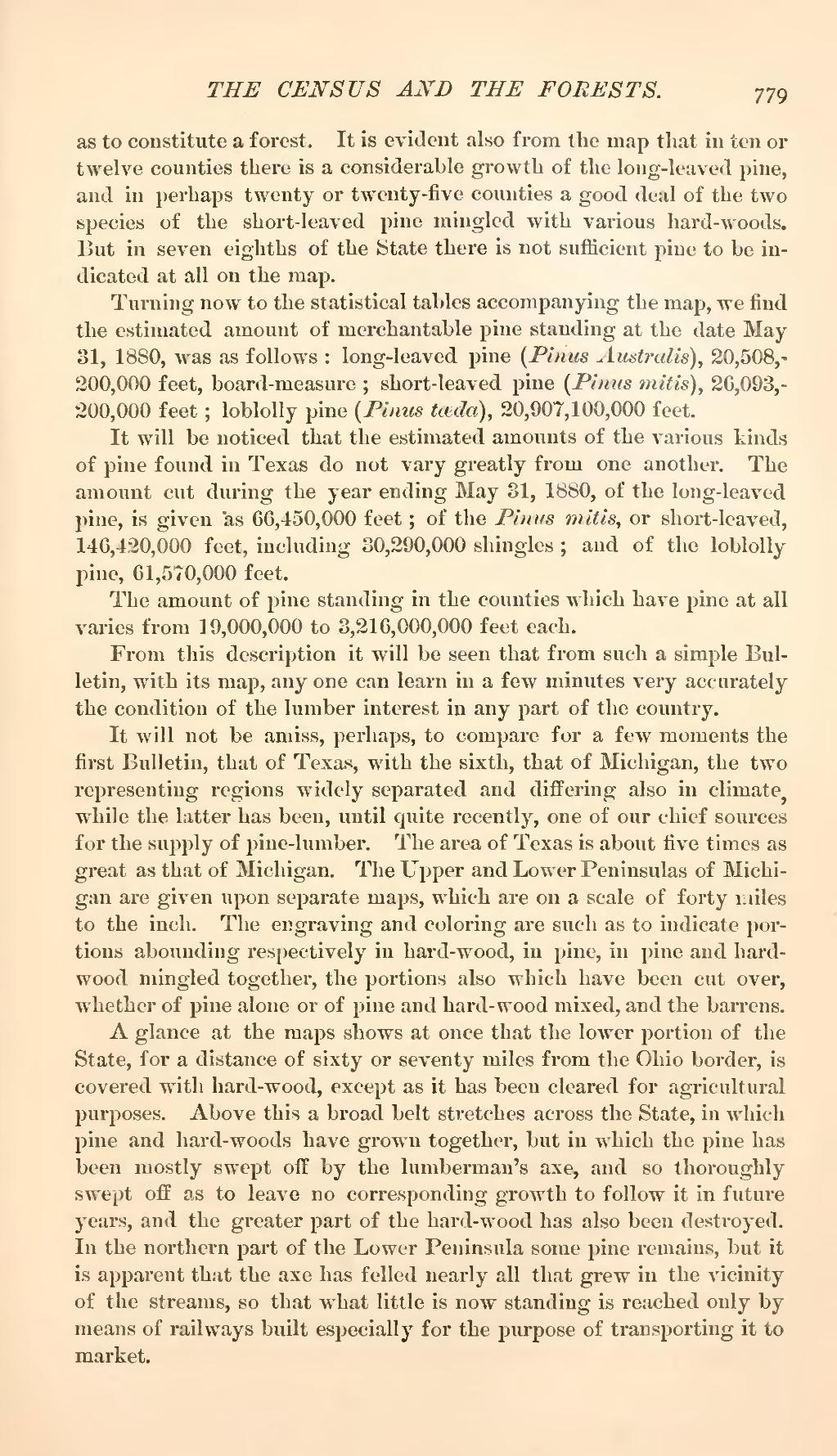as to constitute a forest. It is evident also from the map that in ten or twelve counties there is a considerable growth of the long-leaved pine, and in perhaps twenty or twenty-five counties a good deal of the two species of the short-leaved pine mingled with various hard-woods. But in seven eighths of the State there is not sufficient pine to be indicated at all on the map.
Turning now to the statistical tables accompanying the map, we find the estimated amount of merchantable pine standing at the date May 31, 1880, was as follows: long-leaved pine (Pinus Australia), 20,508,200,000 feet, board-measure; short-leaved pine (Pinus mitis), 26,093,200,000 feet; loblolly pine (Times tæda), 20,907,100,000 feet.
It will be noticed that the estimated amounts of the various kinds of pine found in Texas do not vary greatly from one another. The amount cut during the year ending May 31, 1880, of the long-leaved pine, is given 'as 06,450,000 feet; of the Pinus mitis, or short-leaved, 146,420,000 feet, including 30,290,000 shingles; and of the loblolly pine, 61,570,000 feet.
The amount of pine standing in the counties which have pine at all varies from 19,000,000 to 3,216,000,000 feet each.
From this description it will be seen that from such a simple Bulletin, with its map, any one can learn in a few minutes very accurately the condition of the lumber interest in any part of the country.
It will not be amiss, perhaps, to compare for a few moments the first Bulletin, that of Texas, with the sixth, that of Michigan, the two representing regions widely separated and differing also in climate while the latter has been, until quite recently, one of our chief sources for the supply of pine-lumber. The area of Texas is about five times as great as that of Michigan. The Upper and Low T er Peninsulas of Michigan are given upon separate maps, which are on a scale of forty miles to the inch. The engraving and coloring are such as to indicate portions abounding respectively in hard-wood, in pine, in pine and hardwood mingled together, the portions also which have been cut over, whether of pine alone or of pine and hard-wood mixed, and the barrens.
A glance at the maps shows at once that the lower portion of the State, for a distance of sixty or seventy miles from the Ohio border, is covered with hard-wood, except as it has been cleared for agricultural purposes. Above this a broad belt stretches across the State, in which pine and hard-woods have grown together, but in which the pine has been mostly swept off by the lumberman's axe, and so thoroughly swept off as to leave no corresponding growth to follow it in future years, and the gi-eater part of the hard-wood has also been destroyed. In the northern part of the Lower Peninsula some pine remains, but it is apparent that the axe has felled nearly all that grew in the vicinity of the streams, so that what little is now standing is reached only by means of railways built especially for the purpose of transporting it to market.
